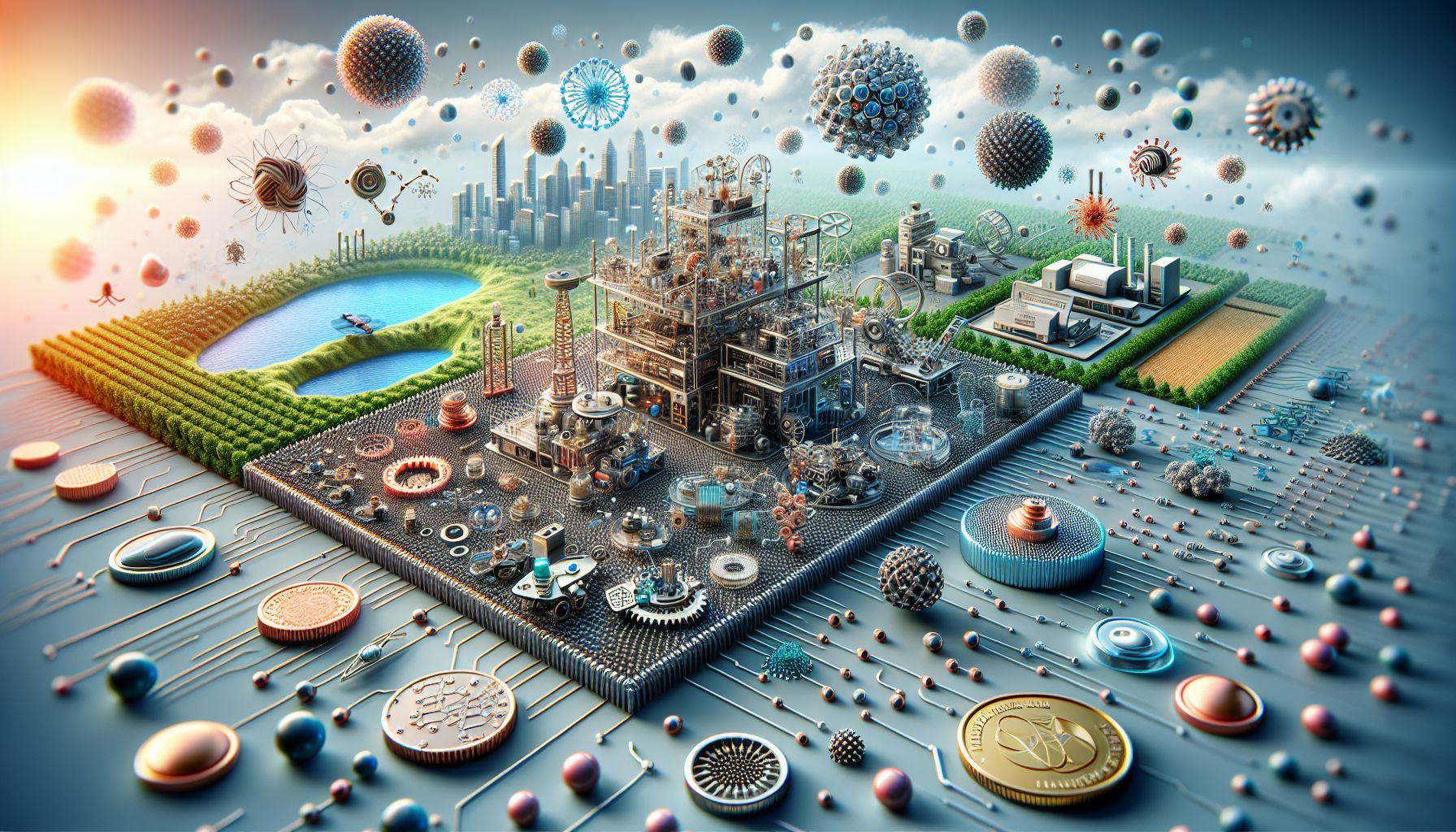📌 Let’s explore the topic in depth and see what insights we can uncover.
⚡ “Think small. Now think smaller—much smaller. Welcome to the hidden universe of nanotechnology, where size truly defies limits, changing our world in colossal ways!”
The world around us is a fascinating place, teeming with wonders that often go unnoticed. One such wonder is the world of nanotechnology, a realm so tiny, yet so significant, that it has the potential to revolutionize our lives in ways we can hardly imagine. 📎 Imagine a world where doctors could target and destroy cancer cells without harming healthy tissues, where invisible and impenetrable layers of protection could be built around your electronic devices, or where you could store the entire Library of Congress in a device the size of a sugar cube. Sounds like a sci-fi movie, right? Well, welcome to the world of nanotechnology!
🔬 What Exactly Is Nanotechnology?

"Unveiling the Giant Impact of Tiny Nanotech"
Nanotechnology, as the name suggests, is the science, engineering, and application of materials at the nanoscale. The prefix “nano” comes from the Greek word for ‘dwarf,’ and in scientific terms, it refers to one billionth of a meter. To put that into perspective, a single human hair is about 80,000 nanometers wide! 📏 This technology manipulates individual atoms and molecules to create new materials and enhance existing ones. It’s like playing with lego blocks, but at a scale so small that the naked eye can’t see.
🚀 The Journey of Nanotechnology: From Theory to Reality
The concept of nanotechnology was first proposed by physicist Richard Feynman in a lecture titled “There’s Plenty of Room at the Bottom” in 1959. However, it was only in the 1980s, with the invention of the scanning tunneling microscope (STM), that scientists were able to visualize and manipulate individual atoms. This marked the transition of nanotechnology from a theoretical concept to practical reality. Since then, nanotechnology has made significant strides, shaping numerous industries including medicine, electronics, energy, and environmental science.
💊 Nanotechnology in Medicine: Targeted Treatment to Fighting Cancer
Nanotechnology holds great promise in the field of medicine. With the development of nanobots and targeted drug delivery, it’s like having a GPS system for medicines. These microscopic robots can be programmed to deliver drugs directly to the diseased cells, minimizing side effects and improving the efficiency of the treatment. Moreover, nanotechnology is providing new weapons in the battle against cancer. Gold nanoparticles, for instance, can be used to target cancer cells and heat them until they self-destruct, leaving healthy cells unharmed.
💻 Nanotechnology in Electronics: More Storage, Less Space
The world of electronics has been revolutionized by nanotechnology. The microprocessors that power our computers, smartphones, and other digital devices owe their existence to this science. By making transistors — the tiny switches that process information — smaller and faster, nanotechnology has enabled the creation of devices that are lighter, more portable, and more powerful. Plus, nanotechnology could take data storage to a new level. Scientists have developed a technique called nanoimprinting that could potentially store the entire Library of Congress in a device the size of a sugar cube!
🌿 Nanotechnology in Environmental Science: Clean Energy and Pollution Control
Nanotechnology also offers solutions to some of the most pressing environmental problems. Nano-enhanced materials in solar cells can improve efficiency and reduce costs, making renewable energy more accessible. Furthermore, nanoparticles can be used to remove pollutants and harmful chemicals from water, providing a new way to purify and recycle water in areas where it’s scarce.
🧭 Conclusion
The world of nanotechnology, though small in size, indeed has enormous implications. From revolutionizing healthcare to transforming the way we store data and fight environmental problems, nanotechnology is an exciting frontier of science and technology. However, as we continue to explore and exploit this tiny world, it is also essential to consider the ethical and safety implications. Like any powerful technology, nanotechnology has the potential to be used for both good and harm. As we stride into the nano era, we must ensure that this technology is used responsibly and for the benefit of all. In the words of the great physicist Richard Feynman, “There’s plenty of room at the bottom.” And in that room, there’s an entire world waiting to be explored. So, let’s don our nano-glasses 👓 and dive into this incredible journey of discovery and innovation in the world of nanotechnology.
🤖 Stay tuned as we decode the future of innovation!
